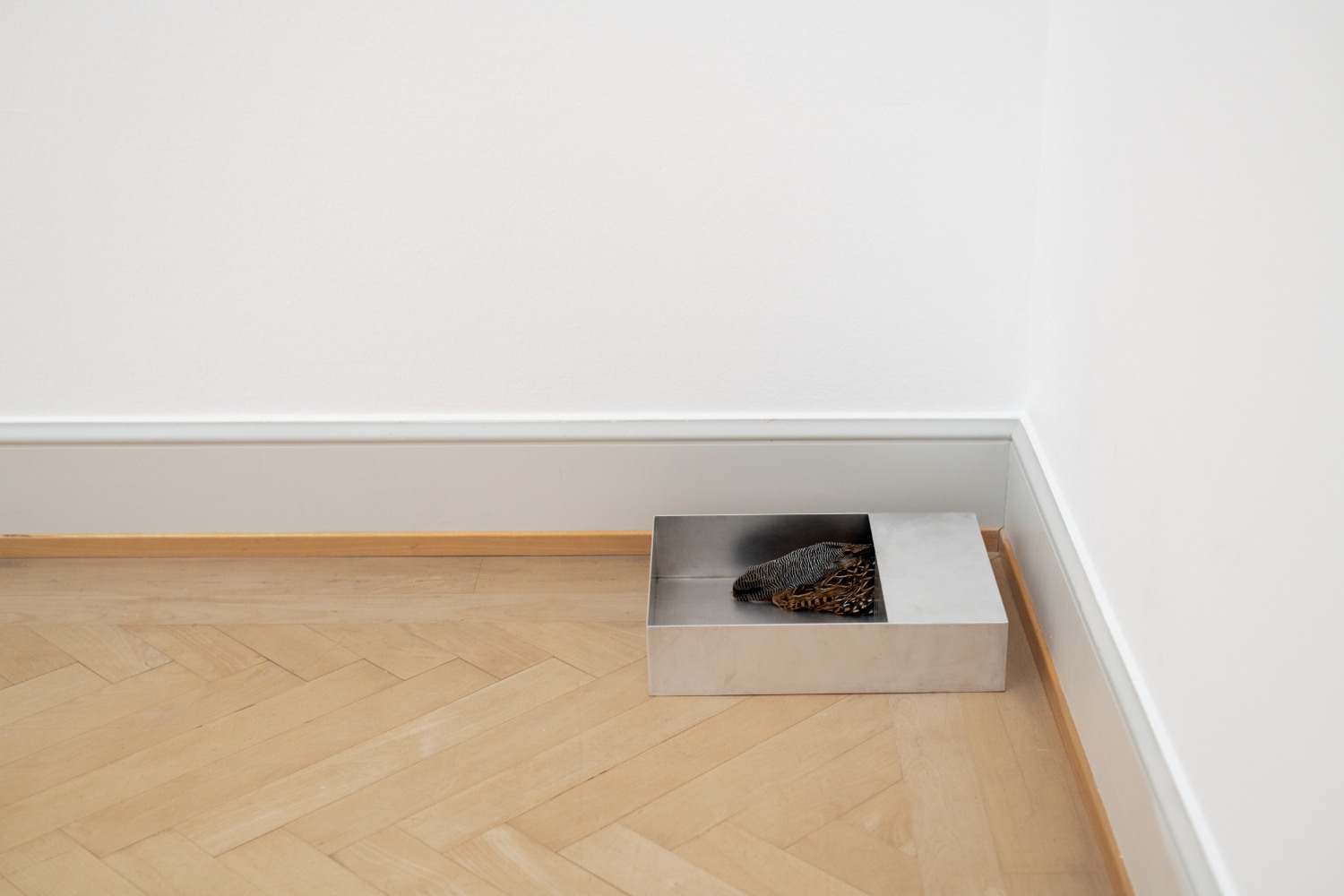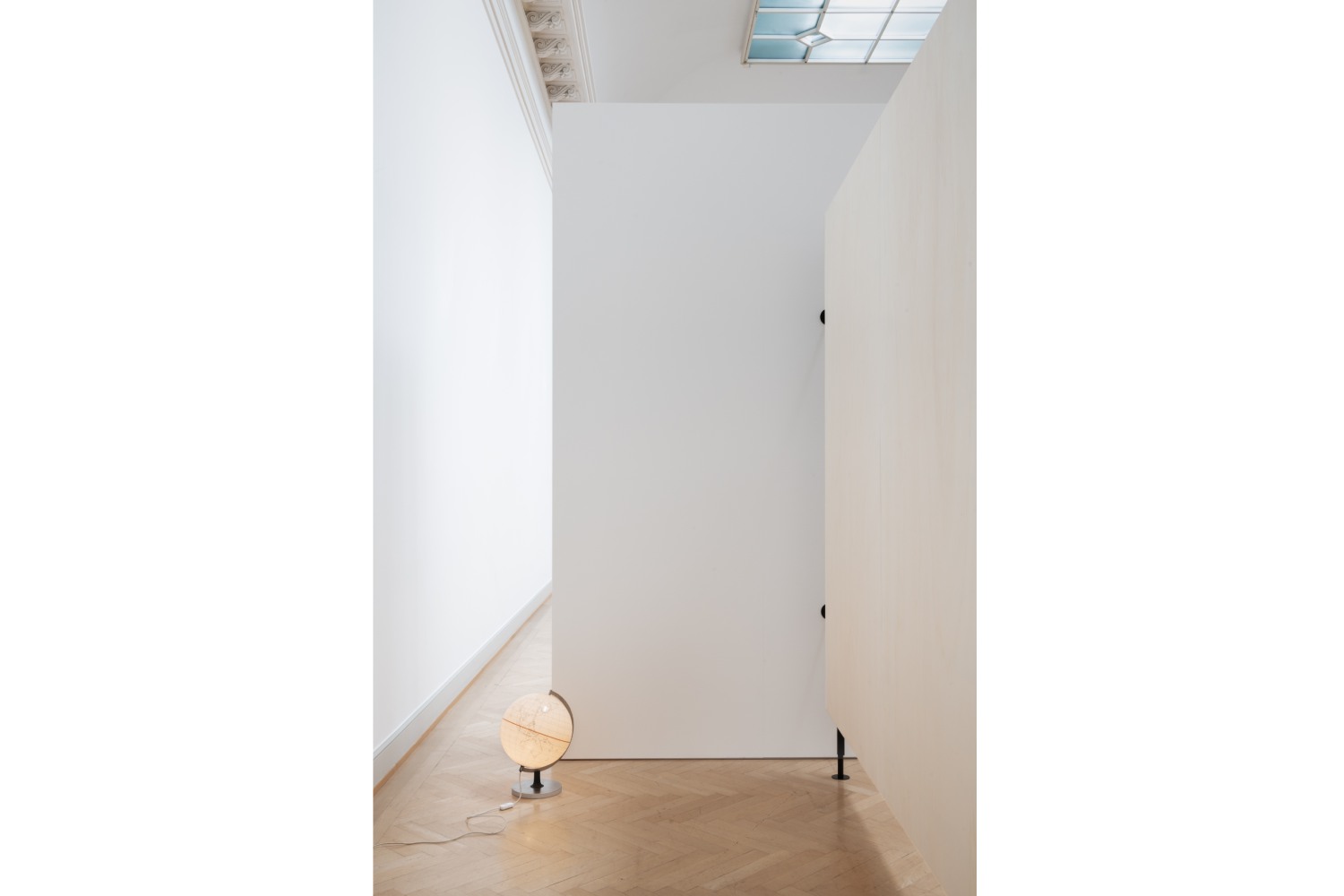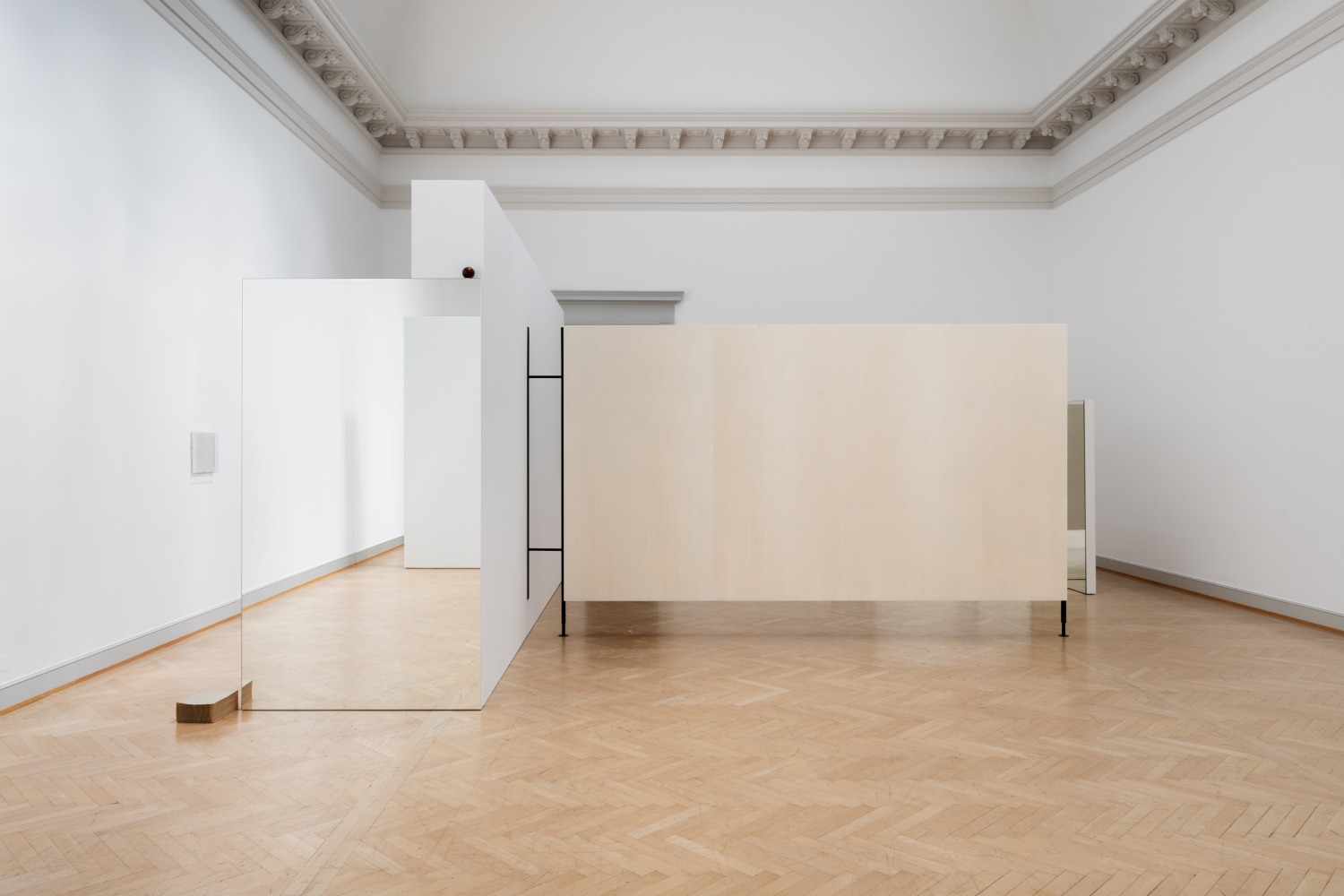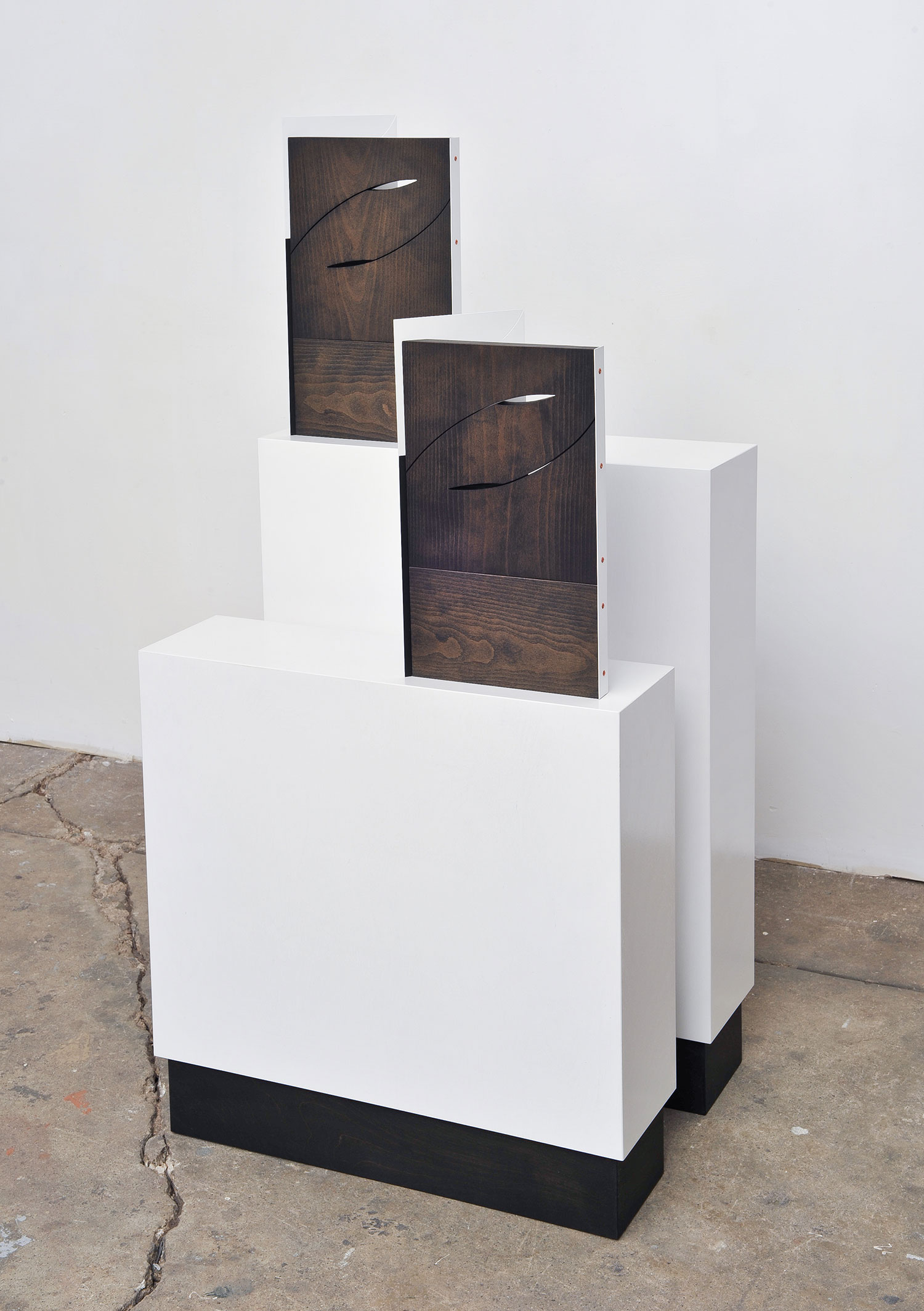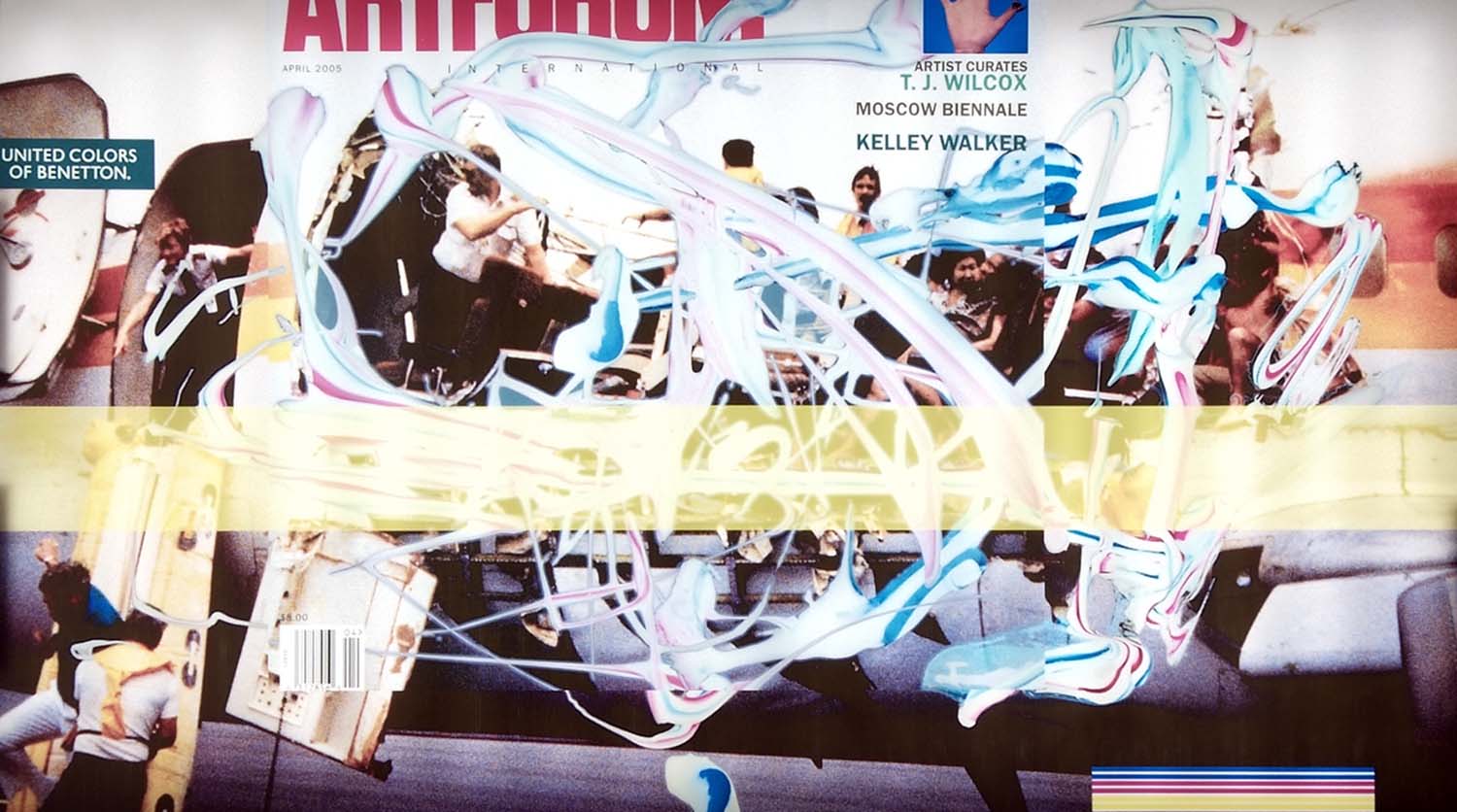Your eye longs for a certain object to return, and suddenly that object reappears in the composition. You glimpse it reflected in a mirrored wall, hidden around a corner, sitting on the edge of a liminal space, in an interrelation of unexpected pairings with what is around it. You are tempted to pose in front of those mirrors, contemplating yourself and the other — the “us” — in a space of togetherness, as if in a mutual exercise of listening and telling that opens up from the personal to the collective.
Haris Epaminonda’s visual language never fails in its structural rigor and quest for formal balance. Often tending toward abstraction and influenced by a minimalist bent, it has the power to shape, redefine, and reshape the space it inhabits. In her installations — punctuated by sculptures, found objects, pages of outdated magazines, videos, texts, archive material and collages, and frequently combined with structures and architectural elements she has designed herself — our gaze is constantly challenged in a potentially endless associative process in which multilayered narratives emerge in a series of rhythmical and choreographed compositions. Imbued with a sense of stillness and apparent suspension, her live sequences are like archaeological excavations suspended in an undefined temporality: labyrinthine scenes not only coexisting with the space, but constituting and informing the space itself.
This feeling is somehow heightened within the historic rooms on the upper floor of the Kunstmuseum St. Gallen, currently hosting “VOL. XXIX,” the second solo exhibition in Switzerland by the Berlin-based Cypriot artist. With natural light streaming in through the windows, these rooms seem particularly suited to emphasizing Epaminonda’s approach to spatial volumes, giving the whole environment a subtle but sophisticated rhythm. Intended as words or syllables in a coherent lexicon of symmetries and repetitions, her sculptures appear as witnesses in a complex cultural-historical cosmos, revealing a panorama in which the artist’s projects are titled as consecutively numbered “volumes,” leaving the interpretation open to association, imagination, and even dreams.
Curated by Nadia Veronese, “VOL. XXIX” presents a landscape populated by new and existing works that defy precise classification, manifesting themselves in their factual presence before any symbolic reference is triggered in our minds. Upon entering the exhibition, “the walls do the trick, and hide while they reveal, a choreography of surprise and balance between vulnerability and vigor, organic matter within seemingly cold surfaces, representation within abstraction and at most times geometric shapes holding bodies, humans or animals.”1 Controversial motifs divide the display into intimate segments; these walls act as “prosthetic” elements, according to Epaminonda2, and are works capable of supporting, caring for, separating, and connecting. They are apparently blank surfaces, precisely because the emptiness they create “is the recovery of a possibility.” 3
The first room is occupied by Untitled #02 a/o (2023), an installation comprising wood, black metal, mirrored wall panels, a wooden plinth, and a pair of red-painted Japanese bowls with a plate in the same finish. These latter elements play hide-and-seek as they chase each other around the corners of this setting. A hallmark of Epaminonda’s modus operandi, this structural pattern, around which various visual “puzzles” are arranged, recurs throughout the exhibition in a way that echoes the rhythmic economy of her compositional approach to space, objects, forms, and images, which culminates in the following room, a vast honorary hall with a skylight ceiling. Here are a series of wall partitions and a number of sculptures, mostly found objects, including a miniature wooden mannequin, an aged stack of fax paper, an illuminated globe, a geometric aluminium sculpture with brass grasshoppers, a box with a bird pelt, a series of drawings in pen and pencil on paper, a small iron snake moving away from (or toward) a model aluminum house, a light blue pastellone wall piece that recalls the apartment of a Venetian palazzo, and a piano scroll. Like whispers and traces of a bygone path, they all seem to unfold as actors in a plot that Epaminonda invites the viewer to retrace through the lens of the associative and seductive power of images, objects, and their constellation of visual nuances and clues.
The exhibition continues in the third room, where Chronicles XXIII (2023) — a digitalized Super 8 film part of an ongoing series of moving images initiated in 2011 and filmed by the artist — alternates fuzzy and faltering shots of jellyfish floating in an aquarium with illustrations of joint bandages. All around is a modular panel structure with some drawings, a domino box, and other sculptural elements on the floor whose compositional logic evokes a severe but flexible linearity that defies rigidity and resolves into more snaking forms boasting soft, spherical or geometric volumes. Finally, in the fourth room, the works on display take advantage of the length of the space, which is lit by five double windows. Here a white pastellone surface and some floor sculptures dialogue with two books from The Infinite Library 4 (“Book #X” and “Book #17”) installed inside a wooden and glass vitrine.
Dealing with memory and experience as potentially productive imaginative tools, Epaminonda’s work, with its layered serial resonances, adroitly translates visual stimuli and physical objects into a rigorous formal vocabulary that remains open yet specific. Fragments of a history represented by remnants and archival material are activated at the intersection of present reality and what has been written in the past — between the moment of the exhibition and its mirrored domain.

